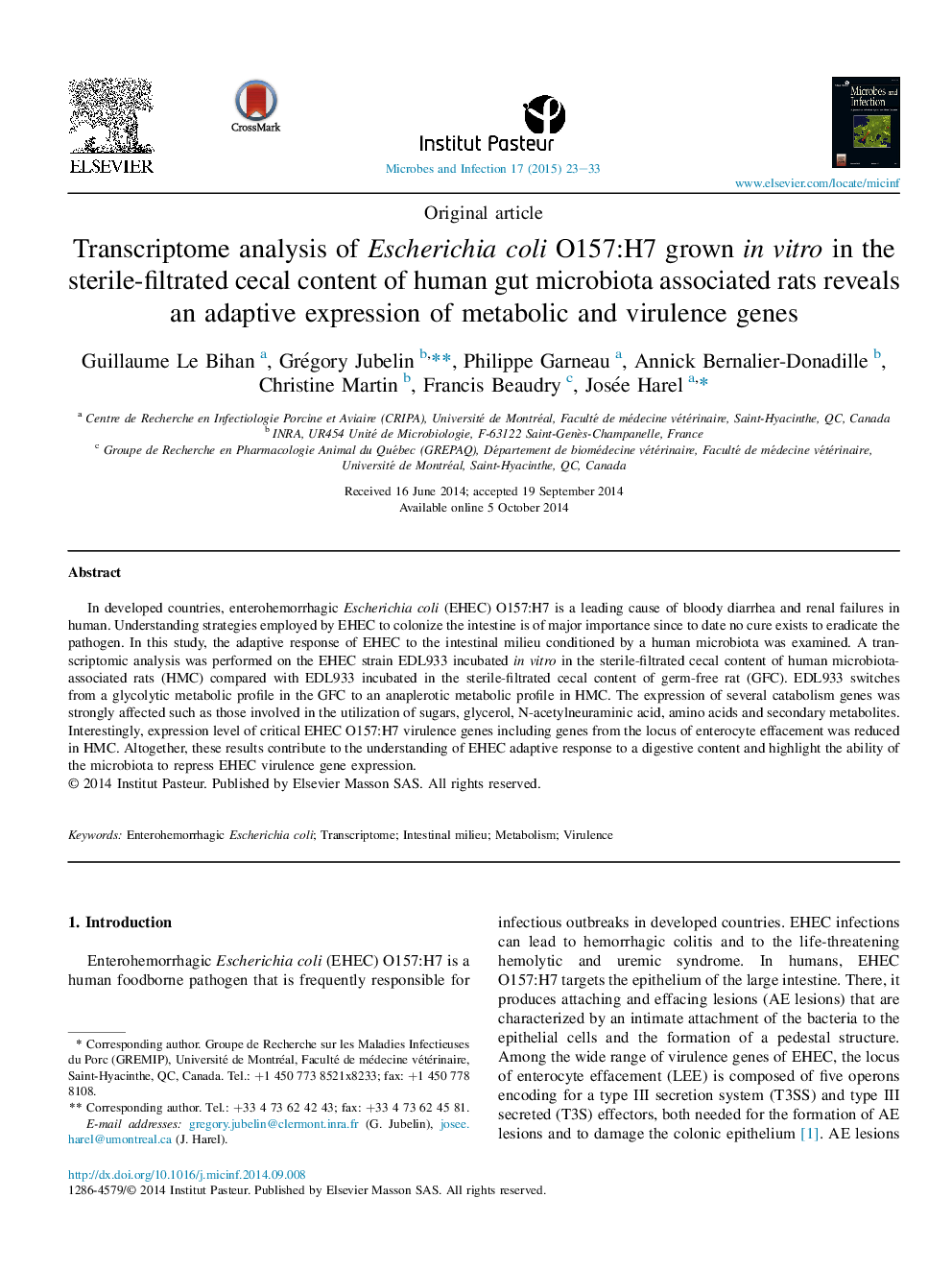| Article ID | Journal | Published Year | Pages | File Type |
|---|---|---|---|---|
| 3414706 | Microbes and Infection | 2015 | 11 Pages |
In developed countries, enterohemorrhagic Escherichia coli (EHEC) O157:H7 is a leading cause of bloody diarrhea and renal failures in human. Understanding strategies employed by EHEC to colonize the intestine is of major importance since to date no cure exists to eradicate the pathogen. In this study, the adaptive response of EHEC to the intestinal milieu conditioned by a human microbiota was examined. A transcriptomic analysis was performed on the EHEC strain EDL933 incubated in vitro in the sterile-filtrated cecal content of human microbiota-associated rats (HMC) compared with EDL933 incubated in the sterile-filtrated cecal content of germ-free rat (GFC). EDL933 switches from a glycolytic metabolic profile in the GFC to an anaplerotic metabolic profile in HMC. The expression of several catabolism genes was strongly affected such as those involved in the utilization of sugars, glycerol, N-acetylneuraminic acid, amino acids and secondary metabolites. Interestingly, expression level of critical EHEC O157:H7 virulence genes including genes from the locus of enterocyte effacement was reduced in HMC. Altogether, these results contribute to the understanding of EHEC adaptive response to a digestive content and highlight the ability of the microbiota to repress EHEC virulence gene expression.
